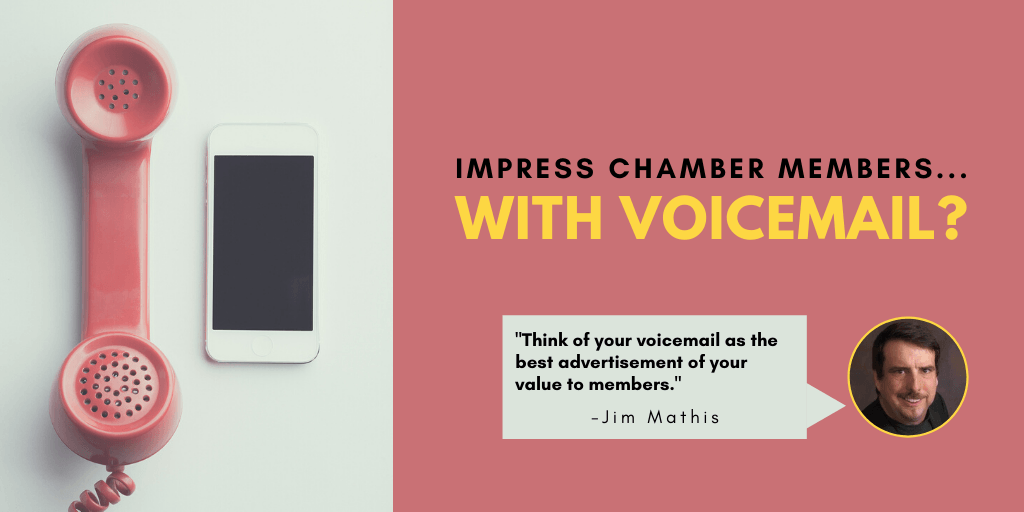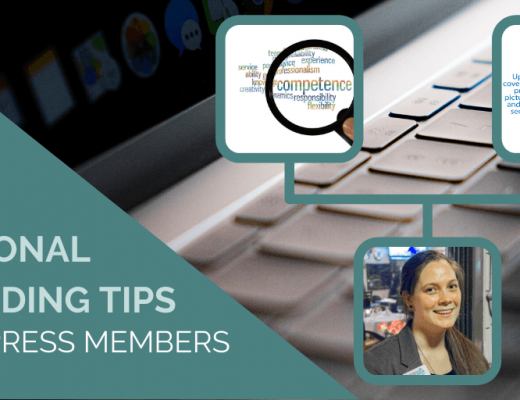Voicemail is neither new nor mind blowing. So how do so many people get it wrong? Below, Jim Mathis has some core tips to help you actually get your calls returned.
R U Technically Challenged?
It’s amazing that we live in a technological age and we still haven’t mastered voicemail. It’s only been around since the 1970s in most businesses. I use the phone extensively in my business and I hear some really poor excuses for voicemail… everything from people laughing in the background as the recording is made to incorrect dates being given (more on that later). Don’t you wish there were voicemail “rules” that people had to follow?
This is among the top takeaways in presentations I lead. It is also a great icebreaker at networking meetings.
Programming Your Voicemail…
1. State your business name and personal name in your outgoing message. Don’t you want to do business with people who call your office? In fact, I don’t know if I have reached the right business or person if you quote the number back to me that I just dialed.
A friend says, “Hello, you’ve ALMOST reached Oscar. Please leave a message…”
Thanks, Oscar!
2. Correct date. If you just have to leave a message that states what day it is and when you will be back, try to get it correct!
I called a number on January 13th and was told the office would be closed for the holiday… until November 28 – BUSTED! If you want to mention the date, make sure you change the message when it has passed.
Nobody says, “I wonder what day it is? I think I’ll call someone so their voicemail will tell me.”
3. Be creative. Use your voicemail to tell your customers your value and what you can do to benefit them.
When I am unavailable, I tell callers “I am helping someone reinvent their business but will be glad to help you discover your differences next.”
Here’s a thought for salespeople: use your voicemail to sell value to potential clients when you can’t answer the phone.
Clients are stuck listening to you. Give them insight into the value you can provide for them NEXT!
4. Make it brief. If your greeting is long and boring people are less likely to leave a message.
If you want to give your address, hours of operation and other information, then don’t make every caller sit through it. Give options to get certain information. Sometimes all people want to do is leave a message, not find out every detail of your life.
“Our options have changed recently.”
If it has been over 6 months that’s not very recent.
5. Less is best. Reduce the number of times someone has to press a button to get the information they need. Nothing irritates a caller like repeatedly hearing, “For this option press 1, for this option press 2…”, then getting another set of options several more times.
Most people will not wait through more than three lists of options.
Oh yes, this is a personal peeve of mine…if I have to give you my account number or other information by pressing the buttons, don’t ask me what it is again when a “live” person finally answers.
6. Study your voicemail system. Find the manual for your phone system and learn how to speed up the wait times. You can skip right to the end, automatically delete, forward with a comment or reply automatically without ringing the caller’s phone. The effort you invest in learning these shortcuts will pay you back many times over.
7. Empty your Inbox. If your inbox is full and it can’t take more messages, that tells your customers that you don’t bother to check your messages frequently. It tells them that their messages don’t matter. It says you are inefficient at operating a basic device that people under 15 operate flawlessly.
Clean out your inbox and allow people to leave important messages for you.
8. Be responsible and truthful. Tell listeners when you will return calls… and be honest about it. Maybe you might tell when you can best be reached to prevent the frustration of telephone tag. If you have no intention of returning calls, stop telling callers that you will. It keeps you from appearing both incompetent and a liar.
Recommended: Personal Branding Tips to Impress Members
Leaving a Great Voicemail Message…
1. Think ahead about the message you will leave in case you get voice mail. Consider the points you want to make and make a few notes.
Laura Stack says that if a planned phone call takes you seven minutes, and an unplanned call takes 12 minutes, the five minute difference, multiplied by 12 calls a day, could represent an hour of wasted time each day.
Careful planning will give you more time to do what is necessary.
2. Just Press Pound. Did you know that with most systems, you can press # (pound sign) after your message and get a list of options that include erasing and re-recording your message?
I’ve had times when I started coughing or sneezed and had to re-record the message before I left something that I was satisfied to leave.
3. What’s your number? Begin and end with your phone number.
State who you are and your phone number clearly after the beep. “Hi, Sharon, this is Jim Mathis at 407 (pause), 369 (pause), 7842.”
Your name and number should also be the last thing people hear, so they don’t have to start over if they missed it at the beginning. Repeat the information so the person has the opportunity to write it down.
4. Tell why you called. Take more than 60 seconds and you risk having your messages deleted. Remember, the purpose is to leave a message, not give a speech. If your message will be over 30 seconds, you may want to think about detailing the information in an email instead.
Use a script for the first few times to get used to leaving a brief but targeted message. Think about your message and begin with the purpose. “The reason I’m calling is…”
5. Watch your tone. Without any other non-verbal cues such as face and body language, your tone is all you have to communicate with. A monotone lacks enthusiasm, so put vitality in your voice.
Standing increases your energy, and believe it or not, people can hear a smile over the phone.
Want proof? Have you ever been to someone’s house right after they’ve had a fight? Their tone gave it away. It works the same way over the telephone.
“Attitudes are contagious, just like colds.”
John Maxwell
6. Be creative and friendly! If I receive many messages, the ones that sound creative and friendly are going to get my attention first.
Most business people receive a minimum of 5-10 calls a day when they are out, and they have to hear your message along with others they have received. If someone sounds cold the recipient doesn’t want to call them back. Creativity may get your call returned when the other 10
messages received didn’t receive a response. Friendliness is always welcomed.
Remember, the more creative messages are the most remembered!
7. Try other options. If you continually get someone’s voicemail, use email to make a second contact with the person. Many people prefer email to telephone time. So, go with that if that is the preference! Not returning calls can be a signal that email is preferred.
Use these tips to transform your business to a new level of professionalism and productivity. You will be amazed at what some of these changes will do for your image– and your business and profit line!
About the Author

Jim Mathis, IPCS, CSP is the Reinvention PRO™. As an International Platform Certified Speaking Professional, bestselling author and trainer, he helps leaders who want to reinvent themselves in challenging economies.
To subscribe to his free personal and professional development newsletter, please send an email to: [email protected] with the word SUBSCRIBE in the subject. An electronic copy will be sent out to you every month. For more information on how Jim and his programs can benefit your organization or group, please call 407-369-7842, or visit his web site: www.jimmathis.com. ©2019 Jim Mathis
Interested in sharing your knowledge? Click here.



